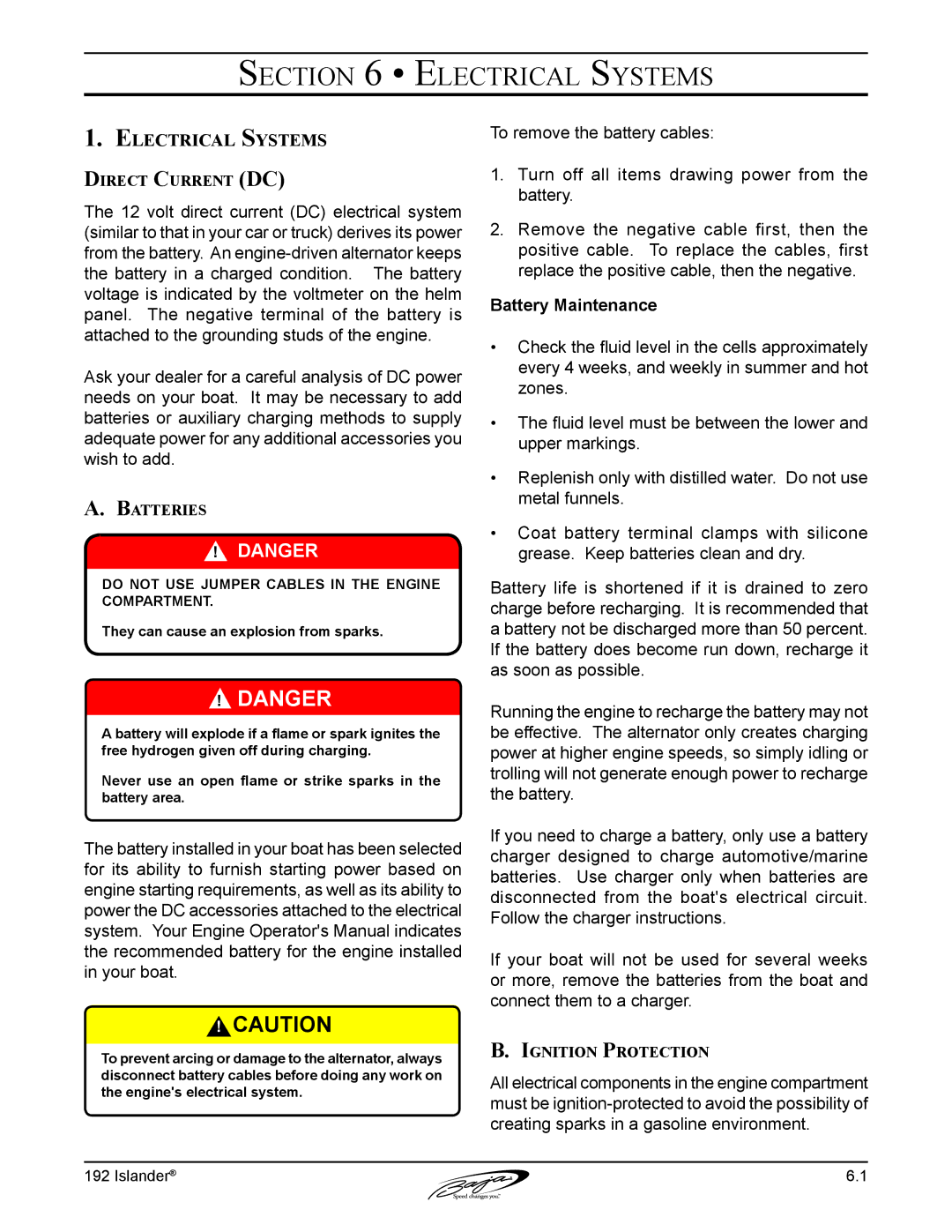192 Islander specifications
The Baja Marine 192 Islander is an exceptional mid-range powerboat designed for both performance and leisure. This vessel stands out for its versatility, combining sporty characteristics with the ability to provide a comfortable family outing on the water.One of the most notable features of the Baja 192 Islander is its sleek, aerodynamic hull design. With a length of 19 feet, this boat is crafted from high-quality fiberglass, ensuring durability and resilience. The deep-V hull helps to cut through waves with ease, providing a smooth ride even in choppy waters. This design not only enhances performance but also contributes to fuel efficiency, making it an economical choice for boaters.
Powering the Baja 192 Islander is typically a potent V8 engine, delivering impressive horsepower that ensures exhilarating acceleration. The boat is built for speed, appealing to those who crave thrills on the water. The engine compartment is engineered for easy maintenance, allowing boaters to spend more time enjoying their adventures rather than worrying about upkeep.
The cockpit of the Baja 192 Islander is designed with both function and comfort in mind. The helm features a well-arranged dashboard with easy-to-read gauges and intuitive controls, ensuring that the captain has complete command over the vessel. Upholstered seating provides comfort for both the driver and passengers, while stainless steel accents add a touch of elegance.
Another significant feature of the Baja 192 Islander is its ample storage options. The boat includes several compartments for personal belongings, gear, and fishing equipment, making it ideal for various activities such as day cruising or fishing excursions. The swim platform at the rear of the boat offers an easy entry point for swimming or water sports, enhancing the overall experience.
For entertainment, the Baja 192 Islander can accommodate sound systems that allow boaters to enjoy their favorite music while on the move. The layout also allows for social gatherings, making it a great choice for family outings or trips with friends.
In conclusion, the Baja Marine 192 Islander is a perfect blend of performance, comfort, and functionality. With its impressive speed, durable build, and thoughtful features, it remains a favorite among boating enthusiasts. Whether you are seeking adventure or relaxation, the Baja 192 Islander caters to all, making it an exceptional choice for a reliable and exciting boating experience.

